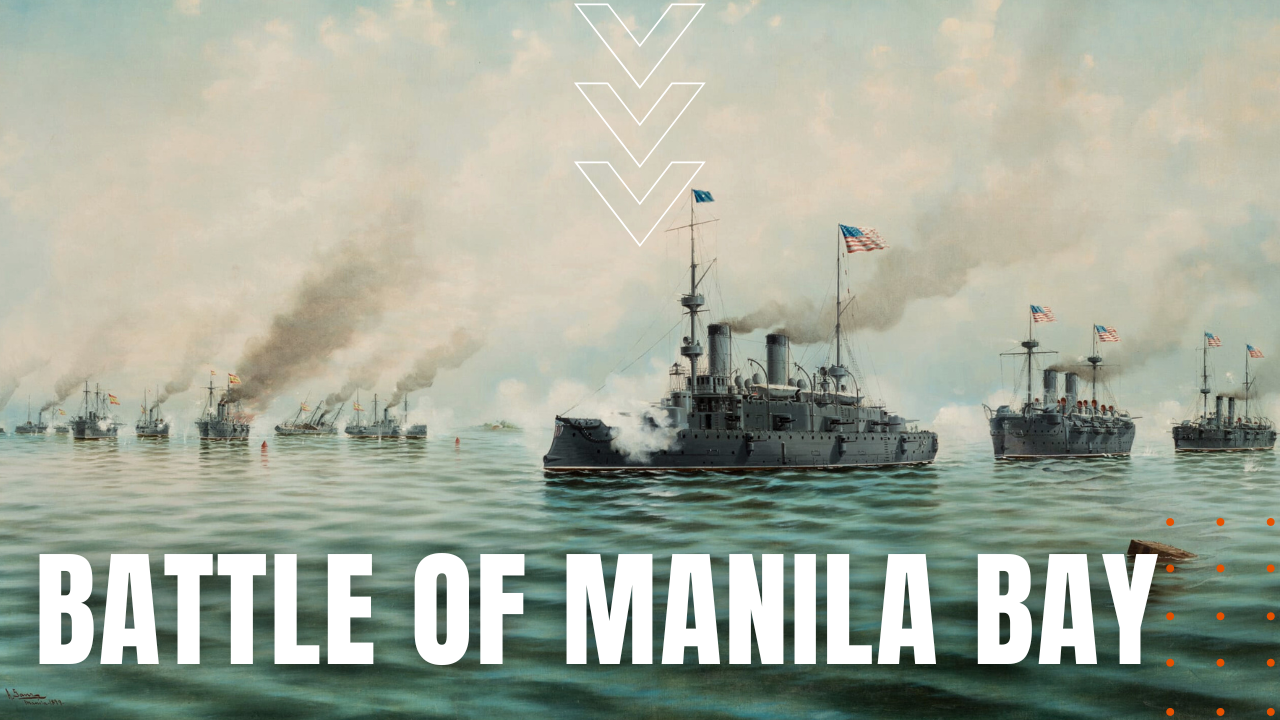The Battle of Manila Bay

After Spain enacted repressive measures against Cuban rebells in 1895, in an effort to quell ongoing insurgencies against Spanish rule, graphic depictions of Spain’s inhumane treatment of Cuban citizens enraged public opinion back in the states, and when mass insurrection and violence returned to the island in 1898, U.S. authorities quickly ordered the battleship USS Maine into Havana Harbor, with the flimsy objective of protecting American citizens on the island. Instead, at 9:40 at night on February 15, the USS Maine was rocked by a massive explosion, sinking the ship at a cost of 260 American lives.
Shaky Evidence
Despite dubious evidence that Spain was the culprit, Congress and President William McKinley declared war on Spain on April 23, immediately ordering Commodore George Dewey, commander of the U.S. Asiatic Squadron, to destroy Spain’s ragtag and aging Pacific fleet. Setting sail from Hong Kong to the Spanish possession of the Philippines on April 25th, five days later, Dewey’s fleet lookouts caught sight of Luzon, extinguishing all running lights after dark as they slipped past the defensive guns on Corregidor Island. After sunrise on May the 1st, the American’s overwhelmingly superior warships, readiness and personnel—thanks in large part to the efforts of assistant secretary of the Navy, Teddy Roosevelt—Dewey turned to his flagship captain aboard Olympia and said, “You may fire when ready, Gridley.” Over the next two hours, the Americans decimated the bulk of Spain’s warships off Cavite naval base, before pausing in their assault when Dewey ordered a second breakfast for his crews.
Back to War
Once fed, the commodore resumed the fight on the surviving Spanish vessels who refused to surrender, until a signal from the USS Petrel to Dewey’s flagship announced that the enemy had surrendered. Once the battle was over, Spain had lost an estimated 370 men, against American casualties of less than ten—drawing to a close one of the most lopsided wars in modern military history. The short-lived Spanish-American War itself officially ended in an armistice on August 12th, followed by the Treaty of Paris in December, which ceded Puerto Rico and Guam to the U.S., while making the island of Cuba a U.S. protectorate. As a final insult, the U.S. purchased the Philippines from Spain for $20 million, which immediately turned the guns of Filipino insurgents from an old enemy to a new one, leading to the deaths of a significantly more American servicemen than had been lost in the defeat of the Spanish, making the Battle of Manila Bay, a humiliating end to the once-proud Spanish empire.
